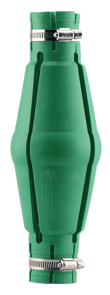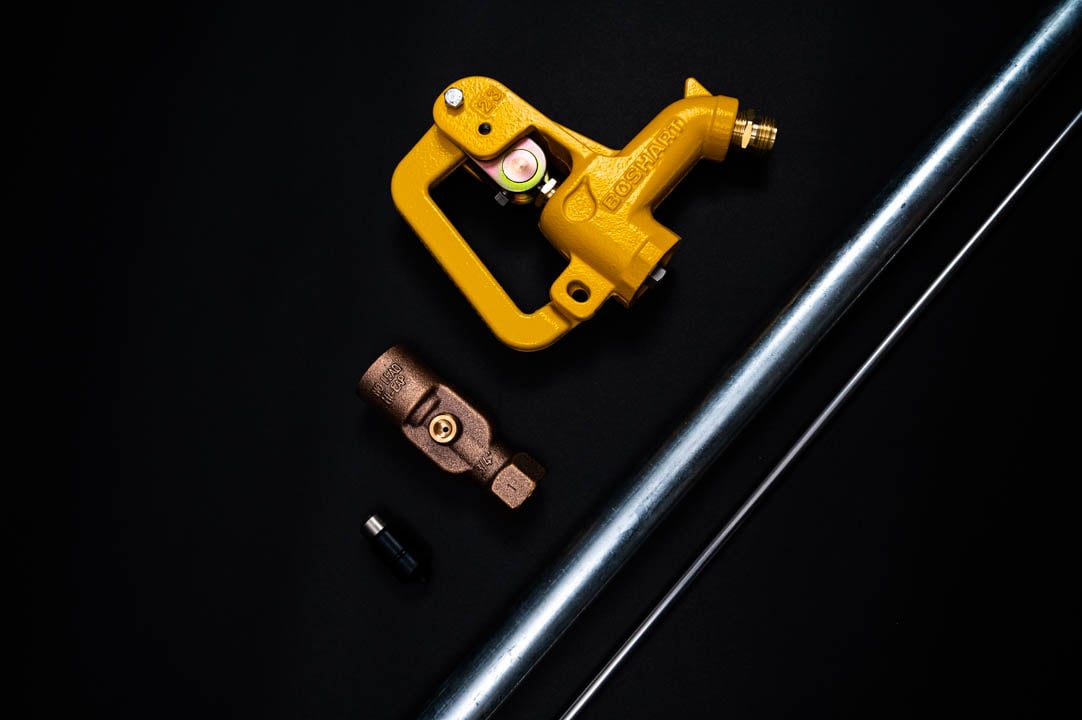BoshartU was born from a collaboration with multiple departments at Boshart like Quality Assurance, Research and development and Sales and Marketing. We write blogs to educate you on plumbing, water well, Waterworks, HVAC, irrigation, industrial, pool and spa and sump and sewage products.
Submersible pump applications require several parts that all play an important role in a successful installation. Torque arrestors are an extremely vital part but since they are deep in the ground, you very rarely see them. But don't worry, they are there, and they are working hard to protect your submersible pump from damage.
In this post, we explore some of the reasons why installing a torque arrestor is required and important. Let's dive in.
Prefer watching videos over reading? Check out our video above. The video delves into the same topic as the blog post!
Torque Arrestor
A torque arrestor, also referred to as a torque stop, is created from two rubber or thermoplastic  moulded pieces and two stainless steel gear clamps. Torque arrestors are a water-well component that prevents wear and tear that start up torque can cause in a submersible pump application.
moulded pieces and two stainless steel gear clamps. Torque arrestors are a water-well component that prevents wear and tear that start up torque can cause in a submersible pump application.
The first torque arrestor is typically installed 18"-24" above the submersible pump. Installation practices can vary depending on the depth, type of pipe, and the pump horsepower. Some installers will install one at the pump while other installers may prefer to use three or four spaced at 75-100 ft intervals.
For more information about submersible pumps and the parts required in a submersible pump application, check out our blog, Components of a Typical Submersible Pump Application.
There are three types of drop pipe that require torque arrestors: Polyethylene pipe, Threaded PVC pipe, and Galvanized pipe.
Polyethylene
Polyethylene pipe is typically found in a coil and is installed using insert fittings. This is the most common piping where torque arrestors are used.
PVC
Torque arrestors are often used with PVC pipe to prevent the loosening of the right-handed thread joints. If there is no torque arrestor, constant start up torque will wear on the PVC riser pipe over time which can cause the pipe to break.
Galvanized
Usually, installations using galvanized pipe do not require a torque arrestor since the pipe does not flex due to the torque, but some installers prefer to still use a torque arrestor at the pump as a centralizer for the pump to ensure proper motor cooling.
Why do I need a Torque Arrestor?
The main function of a torque arrestor is to prevent the motor start-up torque from banging the pump against the side of the well casing. A pump that is hanging from a plastic pipe will most likely move around, colliding with the well casing, resulting in damage to the pump, pump cable, and piping. Torque arrestors absorb the shock, protecting the pipe column components in your well system.
The torque arrestor is also installed to keep the pump in the centre of the well. Not every well is straight. A pump that is running directly against the well casing may experience motor cooling problems.
Another advantage of installing a torque arrestor is to keep the pump snug in the well casing, reducing the possibility of the pump starting torque resulting in any right-hand threads loosening. Sometimes submersible pumps rotate in a direction that could cause the drop pipe to unscrew.
Important Note
When installing a torque arrestor, there should be at least an 18" space between the submersible pump and the bottom of the torque arrestor.
The 18" space is an important safety measure in case the torque arrestor gets caught and tears when pulling the pump. If the torque arrestor were to fall downward towards the pump, with the 18" space there would still be 6" between the fallen torque arrestor and the pump. Without an 18" space, the one half or both halves could get lodged between the pump and the casing, making it extremely difficult to pull the pump. Ensuring there is an 18" space is the best way to ensure there will be no issues if something were to happen to the torque arrestor.
Torque arrestors are one of many important components of a submersible pump application. A torque arrestor is crucial to guaranteeing the safety of the pump. Make sure to include a torque arrestor, or a couple, in your next submersible pump installation. You will be glad you did.
Have further questions about this subject?

Head over to Boshart's Knowledge Base: technical product information, guidelines, and more.


.png)
![[Video] 3 Reasons to Install a Relief Valve](https://blog.boshart.com/hubfs/45.jpg)

SHARE